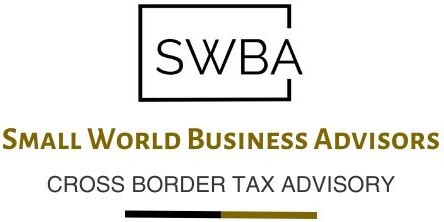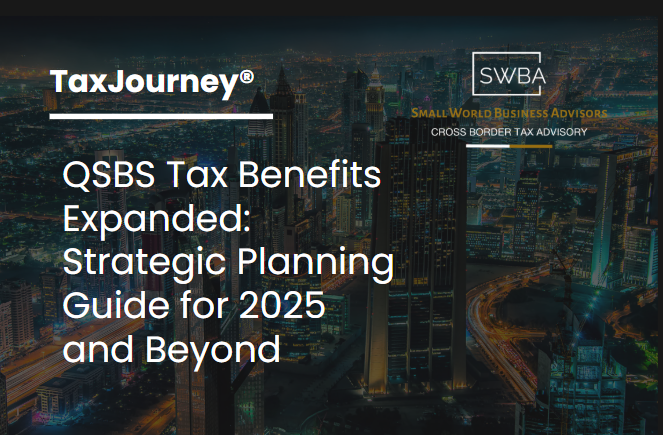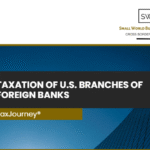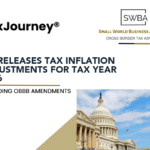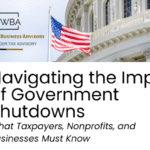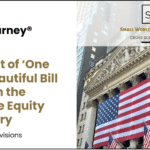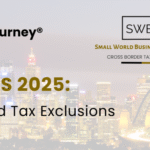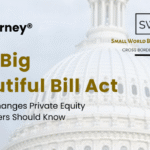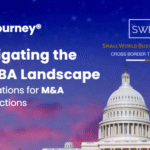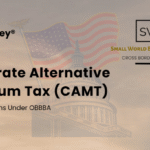Federal legislation enacted on July 4, 2025, has expanded the gain exclusion available for sales of qualified small business stock (QSBS) under Section 1202. The revised law increases tax savings for shareholders in eligible domestic corporations, and government estimates show that taxpayer savings will rise by approximately $4.5 billion each year once all changes are in effect. This update marks the most significant change to Section 1202 since the exclusion was increased to 100% in 2010. The new provisions only apply to QSBS issued after July 4, 2025. Stock issued before this date remains governed by the previous rules.
Recent Amendments to Section 1202 Provisions
The recent legislation introduces three fundamental changes aimed at broadening the accessibility and enhancing the value of qualified small business stock (QSBS) under Section 1202:
- Revised Holding Period Requirements for Gain Exclusion: The rigid five-year requirement has been replaced with a phased exclusion system. Investors now receive 50% gain exclusion after three years, 75% after four years, and 100% after five years. This eliminates the previous cliff effect that created market distortions and provides immediate incentives for patient capital.
- Increased Maximum Exclusion Limit: Prior to recent legislative changes, Section 1202 provided a gain exclusion capped at the greater of $10 million or ten times the taxpayer’s adjusted stock basis. This $10 million minimum limit was established in 1993 and has remained fixed since then, without any inflation adjustments. The One Big Beautiful Bill Act (OBBBA) increases this exclusion floor to $15 million for stock issued after July 4, 2025. Additionally, it introduces annual inflation adjustments starting in 2026 to maintain the exclusion’s real value over time. As a result, eligible taxpayers, including individuals, estates, and trusts, can now exclude at least $15 million of taxable gains from QSBS sales. The provision’s multiplier factor of ten times the stock basis, however, remains unchanged under this update.
- Expanded Gross Asset Limits: Qualifying small businesses can now maintain up to $75 million in aggregate gross assets, up from $50 million. Combined with ongoing inflation adjustments, this expansion significantly increases the pool of eligible companies and extends qualification windows for growing enterprises.
These enhancements apply exclusively to stock issued after July 4, 2025, creating distinct treatment between existing holdings and new issuances.
Implications of OBBB Revisions on Investors and Corporations
The One Big Beautiful Bill Act (OBBBA) introduces important changes to Section 1202, increasing the tax advantages available to investors and the companies in which they invest through qualified small business stock (QSBS).
- Restored Eligibility for Corporations Under Revised Asset Thresholds: Corporations that once exceeded the previous $50 million gross asset limit but now fall below the updated $75 million cap may become eligible once again to issue qualified small business stock (QSBS). These companies should assess the potential impact of this change on their financing and exit strategies. Furthermore, investors who may not meet the newly introduced three to five year holding period requirement might still benefit, as increases in the 10-times basis exclusion can enhance the amount of tax-exempt gain associated with recently issued stock.
- Extended Qualification Periods for Corporations: Several OBBBA provisions tend to reduce the tax basis of corporate assets, which directly affects eligibility for QSBS issuance because the asset thresholds are measured on a tax basis. Key provisions include full bonus depreciation, expanded Section 179 deductions, the ability to expense certain qualified manufacturing real estate, and renewed deductibility for domestic research expenses. Together, these can prolong a corporation’s ability to meet QSBS requirements.
- Increased Accessibility for Later-Stage Investors: Previously, investors involved in later stage funding faced challenges in qualifying for QSBS gain exclusions due to the strict five year holding requirement and asset limitations. The new phased gain exclusion, permitting a 50% exclusion after three years, coupled with the increased gross asset ceiling of $75 million (subject to inflation adjustments), significantly reduces these barriers. This update supports companies that pursue multi-round growth strategies by providing more accessible tax incentives to a wider range of investors.
- Refreshing Previously Issued Stock Under New QSBS Rules: Under the updated regulations, stock issued previously generally cannot be reclassified to benefit from the revised Section 1202 rules if it originally qualified only under the older standards such as the $10 million gain exclusion cap and the five year holding period or if it did not qualify as QSBS at all. However, an exception may exist for corporations recently formed with initial assets exceeding the previous $50 million threshold. Such entities might consider a taxable liquidation followed by reincorporation to issue new stock that satisfies the updated QSBS qualifications. This approach is most effective when the business has experienced limited appreciation since its formation and requires careful structuring to ensure compliance and intended tax outcomes.
- Incorporating a Partnership to Access Section 1202 Benefits: Converting a partnership into a C corporation can offer considerable tax advantages under Section 1202. With the recent increase in the gross asset threshold to $75 million and the implementation of a shorter three year holding period, this conversion option becomes more appealing than before. These changes expand eligibility, allowing a greater number of partnerships to take advantage of the tax benefits available through qualified small business stock (QSBS).
Strategic Planning for S Corporations
Direct Conversion Limitations
Simply revoking S election provides minimal benefits since existing S corporation stock cannot qualify as QSBS retroactively. This approach only benefits future stock issuances, making it generally inadvisable without additional restructuring. Similarly, merging an S corporation into a C corporation fails to create QSBS treatment for exchanged stock. Federal court decisions confirm that stock for stock exchanges disqualify QSBS treatment under Section 1202(c)(1)(B).
Advanced Restructuring Solutions
- Asset Dropdown Strategy: S corporations can transfer operating assets to newly formed C corporation subsidiaries. The parent S corporation holds qualifying stock in the subsidiary, allowing QSBS gain exclusions to flow through to shareholders upon disposition. This approach preserves existing ownership structures while positioning future appreciation for QSBS treatment. Only post contribution appreciation qualifies for exclusion benefits.
- F Reorganization Alternative: Shareholders contribute S corporation stock to a new holding company, which elects qualified subchapter S subsidiary (QSUB) status for the original entity. After converting the QSUB to a disregarded LLC, the holding company contributes business assets to a new C corporation subsidiary. This structure offers two key advantages: no asset title transfers required and potential retention of the original employer identification number.
- Section 269 Compliance: Both strategies require careful analysis of anti-avoidance provisions. While Section 1202 represents deliberate congressional incentive, taxpayers must demonstrate legitimate business purposes beyond tax reduction.
Risk Management Considerations
- Step Transaction Doctrine: The F reorganization approach faces potential IRS challenge under liquidation reincorporation principles if transactions appear orchestrated solely for tax benefits.
- Divisive Merger Alternative: In jurisdictions with divisive merger statutes (Texas, Delaware), S corporations can split assets into separate entities through statutory merger, achieving similar results with reduced step-transaction risk.
Investment and Corporate Opportunities
- Later-Stage Investment Accessibility: The combination of reduced holding periods and expanded asset limits removes traditional barriers facing later round investors. Growth equity and private equity funds can now meaningfully incorporate QSBS benefits into investment strategies.
- Partnership Conversion Benefits: The expanded framework makes C corporation conversion increasingly attractive for partnerships and LLCs. The higher asset threshold accommodates larger enterprises while the three year holding period reduces timing pressures for partners.
- Requalification Potential: Companies that previously exceeded the $50 million asset threshold but remain below $75 million can issue fresh QSBS. This creates immediate planning opportunities for Growth-stage companies approaching traditional size limits, buy-and-build strategies seeking investor attraction and portfolio companies considering recapitalization events
- Stock Refresh Strategies: While existing stock generally cannot benefit from new rules, specific fact patterns may support taxable liquidation followed by reincorporation. This approach works best for recently formed companies with limited appreciation since original formation.
Implementation Best Practices
- Timing Considerations: All enhanced benefits apply only to stock issued after July 4, 2025. Existing stockholders should evaluate whether restructuring creates new qualifying issuances while managing potential tax consequences.
- Documentation Requirements: The graduated exclusion system creates tracking complexity across multiple stock tranches with different acquisition dates and applicable exclusion percentages. Robust documentation systems become essential for compliance and optimization.
- State Tax Coordination: QSBS benefits apply exclusively for federal purposes. State tax implications of restructuring and ongoing operations require separate analysis, particularly in high tax jurisdictions lacking federal conformity.
Actionable Planning Steps
Tax professionals should immediately assess client situations for QSBS optimization:
- Portfolio Assessment: Review existing investments for restructuring potential under expanded thresholds and reduced holding periods.
- Entity Analysis: Evaluate S corporations and partnerships for conversion opportunities, weighing QSBS benefits against other tax considerations including state implications.
- Investment Integration: Incorporate QSBS considerations into due diligence for new investments, particularly those approaching expanded asset thresholds.
- Systems Enhancement: Implement tracking capabilities for complex holding period and exclusion percentage requirements across multiple stock issuances.
Conclusion
The expanded QSBS framework creates generational wealth building opportunities through sophisticated tax planning. Success requires balancing immediate benefits with long term strategic objectives while maintaining strict regulatory compliance.
Professional advisors who master these provisions will deliver substantial client value while positioning practices at the forefront of advanced tax planning in the evolving regulatory landscape.
The information contained in this post is merely for informative purposes and does not constitute tax advice. For more information, feel free to reach us at [email protected]
Copyright 2025 Small World Business Advisors LLC www.swbadvisors.com
